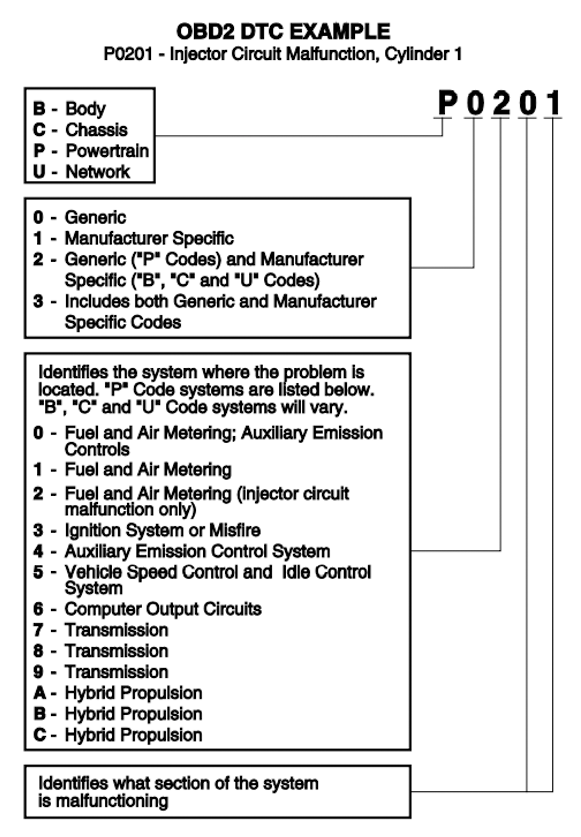Description: Diagnostic Trouble Codes (DTCs) serve as signals or pointers towards a specific problem area in a vehicle. When a vehicle system fails or malfunctions, its onboard computer, commonly referred to as the Powertrain Control Module (PCM), generates a specific DTC that corresponds to the issue. Mechanics, technicians, or even vehicle owners with an OBD II scanner can then retrieve these codes to determine the source of the problem.
Interpreting DTCs:
DTCs are structured in a systematic manner, allowing for precise interpretation. Here's a breakdown:
 | 1. First Character: This identifies the primary system where the malfunction occurred. - B - Body system, including features like airbags and seatbelts. - C - Chassis system, which relates to components like the brakes and suspension. - P - Powertrain, which encompasses the engine, transmission, and related systems. - U - Network communication or miscellaneous issues. 2. Second Character: This character highlights whether the DTC is a standard one that applies across multiple car brands (Generic) or specific to a particular manufacturer (Manufacturer-Specific). - 0 - Generic - 1, 2, or 3 - Manufacturer-Specific 3. Third Character: Denotes the subsystem or a more narrowed-down location of the issue. For instance, in powertrain codes, a '1' might refer to a fuel or air metering problem, while a '3' could imply an ignition system issue. 4. Fourth and Fifth Characters: These further zoom into the problem, specifying which part of the system or component is at fault. Their interpretation can vary based on the earlier characters. |
Key Takeaways:
1. While DTCs provide essential insights into the nature and location of a vehicle malfunction, they are primarily indicators, not definitive diagnoses. It's crucial to consult the vehicle service manual or conduct further diagnostic tests before taking any action.
2. Relying solely on a DTC for parts replacement can lead to unnecessary expenses and may not resolve the underlying issue.
3. OBD II scanners, available at various price points and with different features, are essential tools to read and interpret DTCs. Whether you're a professional mechanic or a DIY enthusiast, understanding DTCs can streamline the troubleshooting process and make vehicle repairs more efficient.